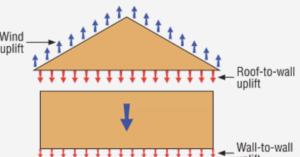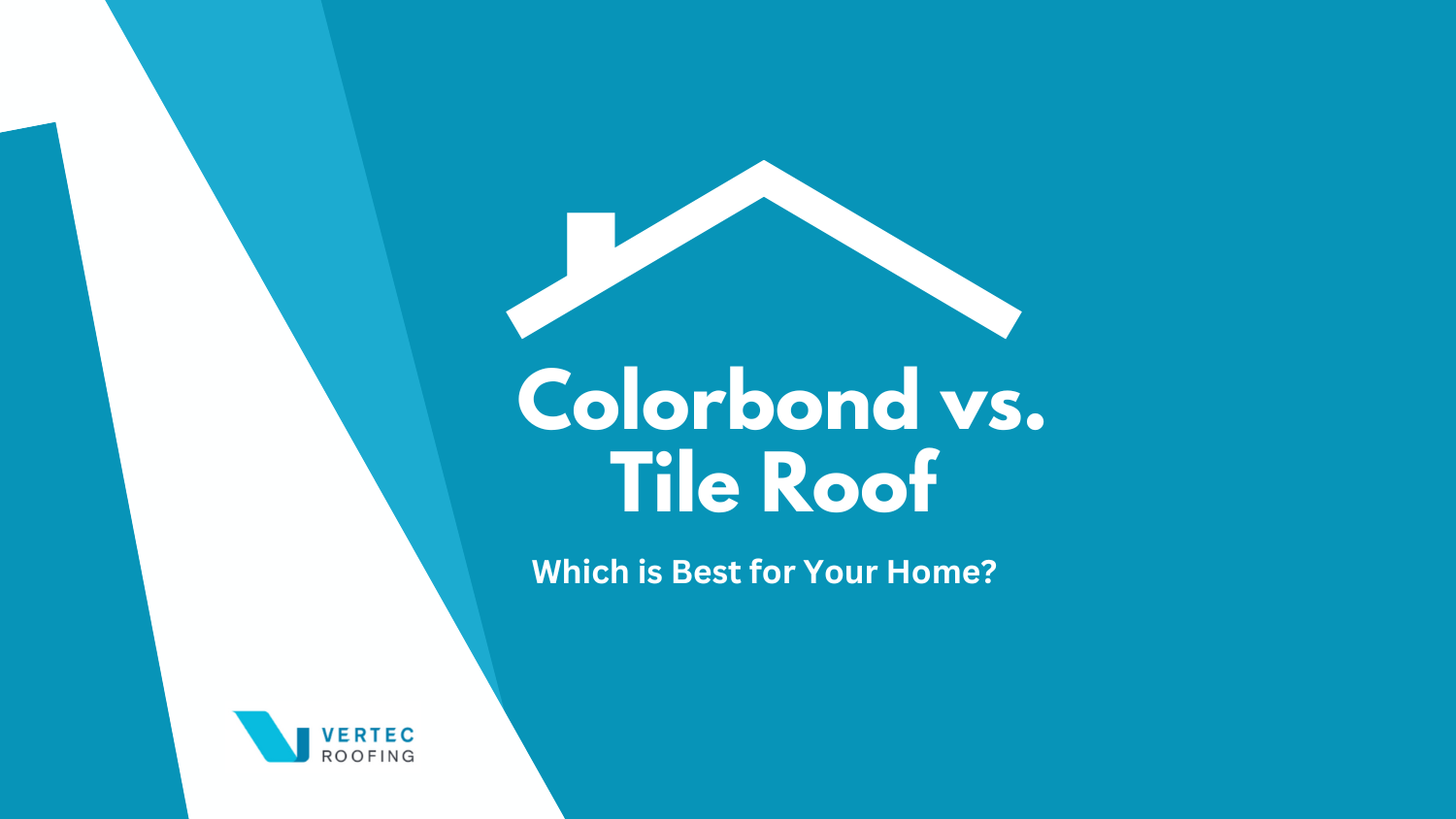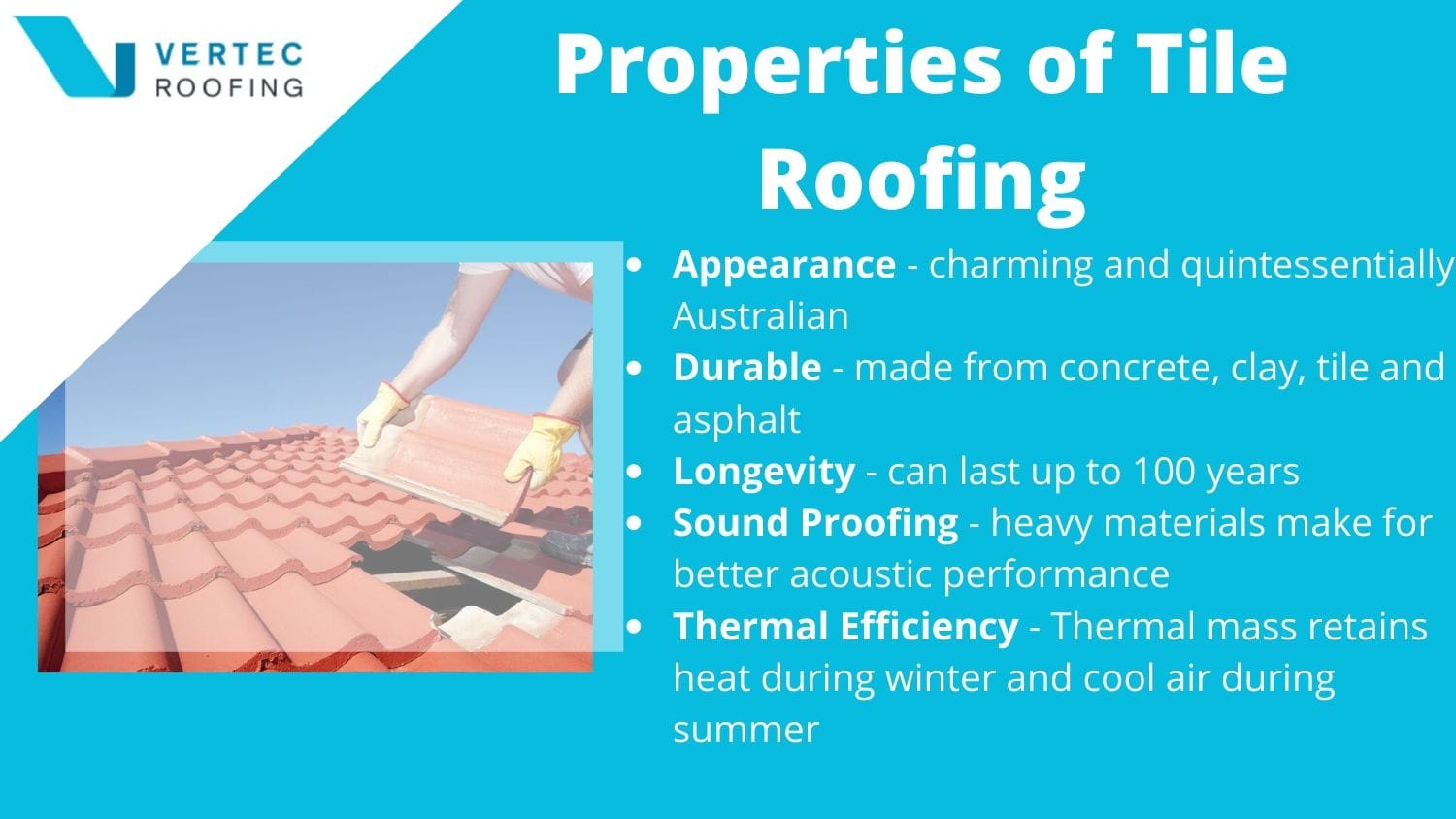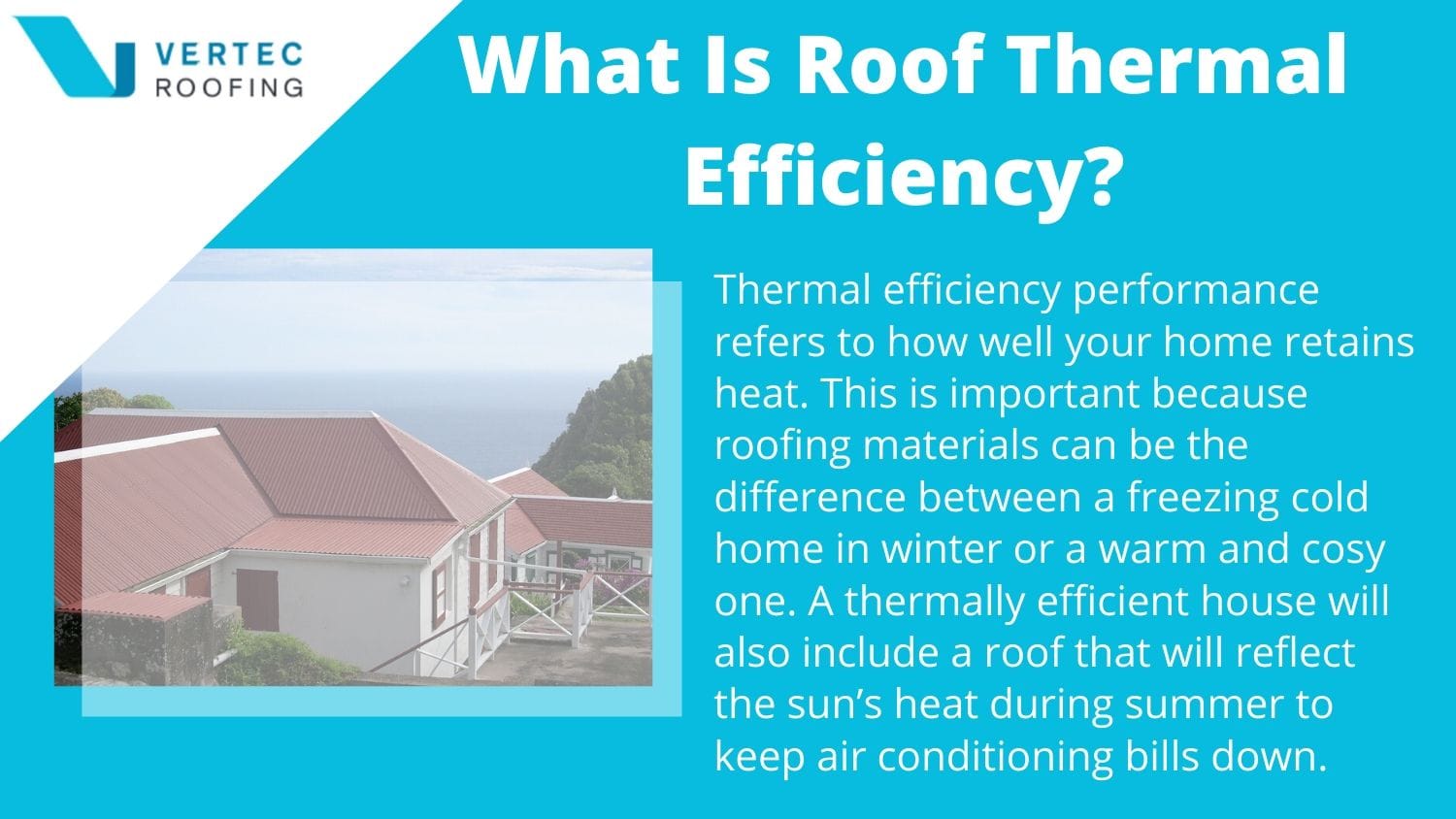

Colorbond vs. Tile Roof – 2023 Guide
When it comes to choosing a roof for your home, many come back to the debate of Colorbond roof vs. tile roof – and for good reason as well! Both colorbond and tile roof materials offer a long list of benefits from insulation to appearance and durability. But, which roofing material is best for your home and where should you invest your roofing budget in 2023?
In this article, we’ll weigh up the age old question that has been asked across Australia and the world for more than half a century; colorbond or tile – which is best?
Both extremely popular roofing choices for Sydney homes, Colorbond roofing and tiling both have their individual merits. Often it may come down to preference; however, there are some significant variations between the properties of each material that are worth considering.
Where tiled roofing is the quintessential Australian roofing material, Colorbond roofing is quickly gained steam over the last few years. When choosing your new roof, the best course of action is to understand what each roofing material can offer to make both an informed and suitable decision.
With so much to consider, including budget, functionality, longevity, style considerations, and location, it’s essential to comprehensively compare the two most popular roofing options before making a last-minute decision. And with that, here’s our take on Colorbond vs. Tile Roof materials.

Colorbond is a coated steel roofing material that has quickly become popular with Australian homes. Tried and tested in rugged Australian conditions, Colorbond roofing is stylish, long-lasting, and resistant. Colorbond roofing was designed to take over from where corrugated roofing left off. Where corrugated roofing easily corroded and required frequent repainting, Colorbond steel is pre-painted and sealed to deter corrosion.
Their clean, sleek appearance characterises Colorbond roofs. Providing a contemporary and smooth aesthetic, the Colorbond range comes with over 22 colours to choose from. While Colorbond roof makes for an exceptional finish on the modern Australian home, using Colorbond materials on older and more traditional houses can significantly improve the overall aesthetics in keeping with the original theme. Colorbond materials allow you to match your gutters and fascia to your roof, keeping the style of your home’s exterior cohesive.
Colorbond roofing materials are made from steel. With a steel core that resembles Zincalume and a top coast that is lead-free paint, Colorbond materials are made to meet Australian Standard AS1397, ensuring strict adherence to the highest quality grade steel. More than just “paint on steel”, Colorbond undergoes rigorous testing in extreme Australian conditions – Colorbond is designed to offer the ultimate protection for your home.
Colorbond is finished with five layers of protection, including a metal coating with enhanced corrosion and chipping resistance. Long-lasting and durable, Colorbond roofs are known to be termite resistant, wind-resistant, and will aid in bushfire protection.
Offering a sturdy and smooth surface, Colorbond roofs are relatively low maintenance. Regular cleaning and washing your Colorbond roof will keep it performing better for longer. Even when maintenance work is required, there is little chance of damage to the steel sheets as Colorbond is remarkably resilient.
Lightweight and solar reflective, Colorbond roofing provides exceptional thermal insulation. Colorbond roofing materials reflect more of the sun’s heat to keep your air conditioning bills down and will retain heat in winter to keep the house warm. Not to mention, all Colorbond steel is made from recycled materials and can be 100% recycled, making it an environmentally friendly roofing option.

Tile roofing materials have long been the roofing material choice for Australians. Durable, sturdy, and low maintenance, older Australian homes were generally constructed with concrete or terracotta tiles. A house-hold favourite for over 75 years, tiled roofing can last for as long as 50 years with the right maintenance.
Roof tiles are available in a range of different profiles and will significantly contribute to the overall design and style of any home. The traditional roofing material for Australian properties, some heritage-listed sites will be in designated areas that require roof tile materials over alternatives. Depending on your house design and roof structure, roof tiles can significantly add value and charm to the appearance of your home.
Durable by nature, tiled roofs are long-lasting and will continue to perform well as long as they are in good condition. Roof tiling is a particularly durable option for those living in corrosive environments such as near the ocean. Considering roof tiles are made from heavy, sturdy and robust materials, they will protect any home the harsh extremities during extreme wind or hailstorms.
Although relatively durable and robust, roof tiles can become brittle in certain weather conditions. Concrete, clay, slate and terracotta tiles can all suffer extensive damage if struck by substantial force or walked on. Changes in the weather can expand and shift roof tiles, resulting in small gaps that can lead to roof leaks. Because of this, many homeowners with roof tiles will require regular roof maintenance and repairs.
Durable by A tile roof can last up to 100 years with regular maintenance, repairs, and restoration. Known for being able to withstand high winds, hail, and even fire, most manufacturers will provide a 50-year warranty with tile roofing. Roof tiles are also notoriously impenetrable to rot, rust, and insect damage. All in all, tiled roofs are made to last and are a sturdy and reliable roofing option.nature, tiled roofs are long-lasting and will continue to perform well as long as they are in good condition. Roof tiling is a particularly durable option for those living in corrosive environments such as near the ocean. Considering roof tiles are made from heavy, sturdy and robust materials, they will protect any home the harsh extremities during extreme wind or hailstorms.
Although relatively durable and robust, roof tiles can become brittle in certain weather conditions. Concrete, clay, slate and terracotta tiles can all suffer extensive damage if struck by substantial force or walked on. Changes in the weather can expand and shift roof tiles, resulting in small gaps that can lead to roof leaks. Because of this, many homeowners with roof tiles will require regular roof maintenance and repairs.
Roof tiles are generally hefty and will provide exceptional soundproofing. Unlike metal roofs, tile roofing has excellent sound insulation and acoustic performance. The thermal mass of roof tiles also helps to regulate temperatures indoors, providing thermal insulation. In saying that, your roof structure must be able to handle the weight of a tile roof as the materials are considerably heavier than other roofing materials.

In terms of energy efficiency, both tile and Colorbond roofing materials provide adequate thermal insulation for homes. Asphalt, concrete, and clay tiles may absorb heat, whereas Colorbond will use solar reflection technology to reflect the heat away from the house. Roof tiles rely on solid and heavy thermal mass to provide a home with energy efficiency, Colorbond roofs rely on tried and tested technology to make a property more thermally efficient.
Roof material costs can vary significantly because it really depends on a number of tailoring factors. For example, metal roofing can be more expensive than tiles in general but can actually end up being the more affordable option for a large section of roof. A metal roof is also lighter than a tile roof, which means it won’t need as many supporting beams, which reduces the cost of installation. Furthermore, Colorbond is generally quicker to install than concrete or terracotta tiles; saving money on reduced labour costs.
In saying that, roof tile materials will almost always be cheaper than Colorbond technology. For smaller projects, it can be easier and more cost-effective to work with roofing tiles. If you’re thinking about which will be the more cost-effective option, tiles will be cheaper initially but will require more expenses in the future with repairs and maintenance. If you value long-term cost-effectiveness, Colorbond will end up being more affordable in the long run. Initially, the major influences in roof installation costs will be the roof design, the roof structure, and the scope of the project.
When it comes to comparing Colorbond vs. Tile Roof, both options genuinely provide exceptional quality roofing. Where Colorbond and tiles each have their distinct advantages and disadvantages, it really comes down to which will be best suited to your house and design.
Whether you’re after the old-school longevity of roof tiles or the sleek technology of Colorbond, it may just be that personal choice is the deciding factor. The important take away is that doing your research before making a decision can provide you with the best possible tailored roofing solution for your property.
The installation or replacement of any roofing material requires the expert advice and skill of a professional roofing contractor. Vertec Roofing has been servicing and installing Sydney roofs for over 15 years now and will be able to help you make the most informed and reliable decision for your home. Specialising in both roof tile and Colorbond roofing installation, Vertec Roofing can provide you with unmatched roofing services to ensure elite protection of your home.

At Vertec Roofing, we believe roofing is about protecting homes and enhancing comfort.
6 Responses
Thanks for making a blog about tile roof . I really how well written this article is really helpful.
What about condensation issues with color bond?
"Colorbond vs. Tile Roof: A Comprehensive Comparison" – This blog post provides readers with a full study of the advantages and disadvantages of Colorbond and tile roofing solutions, assisting them in making an informed selection for their houses. Residential Roof repair Edmonton The comparison is clearly laid out and emphasizes the advantages of each materials, making it simple to comprehend. Real-world examples and testimonials are also used to strengthen the content’s trustworthiness.
"Colorbond vs. Tile Roof: A Comprehensive Comparison" – This blog post provides readers with a full study of the advantages and disadvantages of Colorbond and tile roofing solutions, assisting them in making an informed selection for their houses. Residential Roof repair Edmonton The comparison is clearly laid out and emphasizes the advantages of each materials, making it simple to comprehend. Real-world examples and testimonials are also used to strengthen the content’s trustworthiness.
This comparison between Colorbond and tile roofing by Vertec Roofing is quite enlightening for homeowners looking to make an informed decision about their roof. The detailed breakdown of the advantages and disadvantages of each roofing material is particularly helpful. It not only discusses the aesthetic aspects but also delves into durability, maintenance, and environmental considerations, which I found very thorough. Plus, the real-life examples and case studies provide valuable insights into how these roofing materials perform in different scenarios.
The detailed breakdown of the pros and cons of each material, as well as their durability and aesthetic aspects, is extremely helpful for making an informed decision. It’s evident that both options have their merits, and your article provides valuable insights to help readers choose the best fit for their homes. Thanks for sharing this informative piece, which is sure to guide individuals in making the right roofing choice for their needs and preferences!